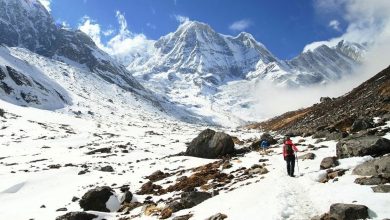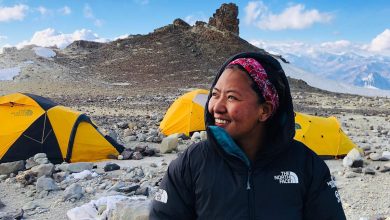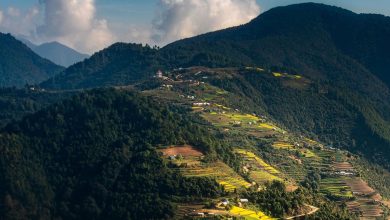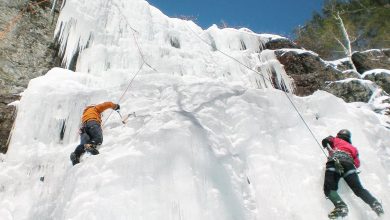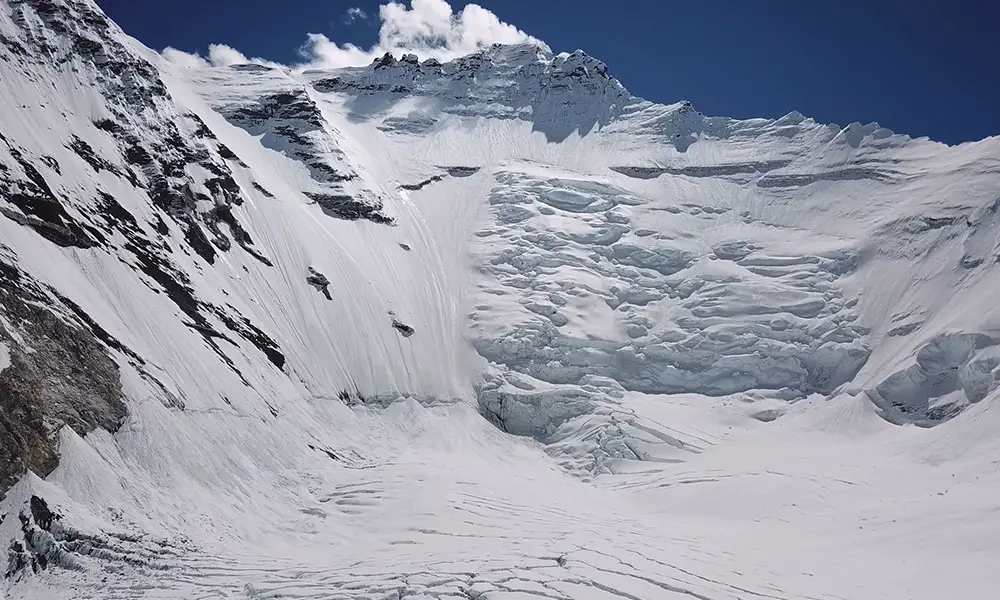
Among all the tall mountains in the world, Lhotse is the fourth highest, standing at 8,516 meters (27,940 ft) above sea level. The first, second, and third highest mountains are Everest, K2, and Kanchenjunga. The primary peak is along the boundary between Nepal’s Khumbu and the Tibet Autonomous Region of China. Lhotse has Everest and Nuptse on the north and west, respectively. Lhotse crests the tremendous horseshoe-shaped arc of the Everest mountain.
Lhotse is not considered prominent compared to other peaks despite being the fourth-highest mountain in the world because of the height of South Col and the interconnection of Everest and Lhotse. The Tibetans called this mountain Lhotse, a synonym for South Peak. Lhotse is popular among the expeditors who climb it and those who are on their way to summit Everest and want to return to Camp IV and head to Lhotse for the double expedition.
There are a lot of interesting facts that are going to fascinate you about Lhotse. Make sure you read till the end of this article to know more!
You may also like: 7th Highest Mountain
What is the meaning of Lhotse?
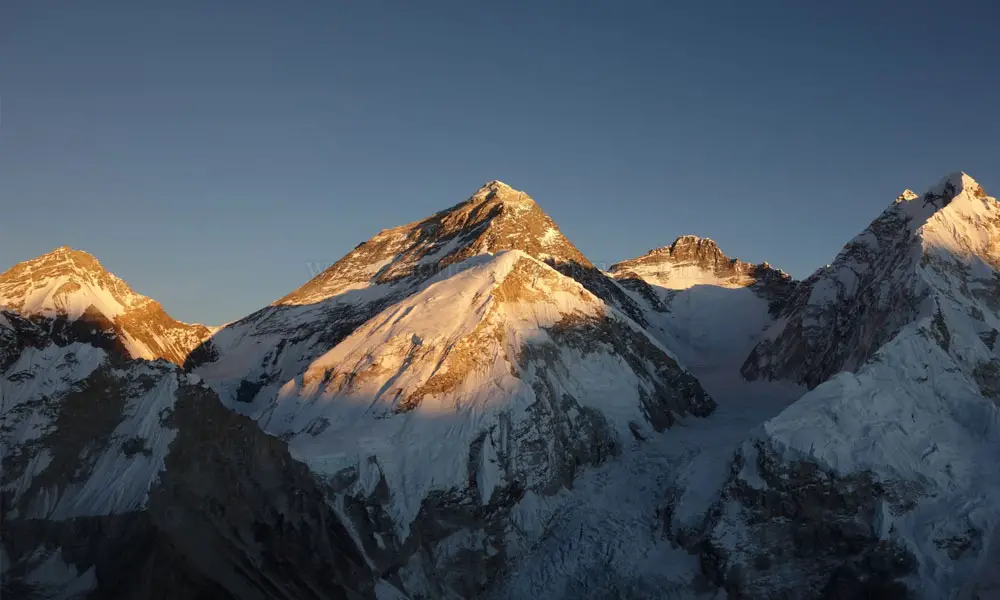
In the Tibetan language, Lhotse refers to the South peak. There is a significance as to why the mountain got the name that it has. Lhotse is located on the Nepal and China border. The location is between the Himalayan laps of Nepal and the Tibet Autonomous Region of China. The close relationship between the South Col, which also falls on the way to Mount Everest, also has a role to play in the mountain being named Lhotse.
Hence, if a summiteer is ever around South Col, he wouldn’t find it as difficult to summit both Mount Everest and Lhotse one at a time during the same expedition.
Another interesting fact about Lhotse is that the Sherpas considered it to be one of the smaller peaks. It so turned out that Lhotse was the fourth highest peak in the world, which was confirmed by the Survey of India.
What is the route to Lhotse?
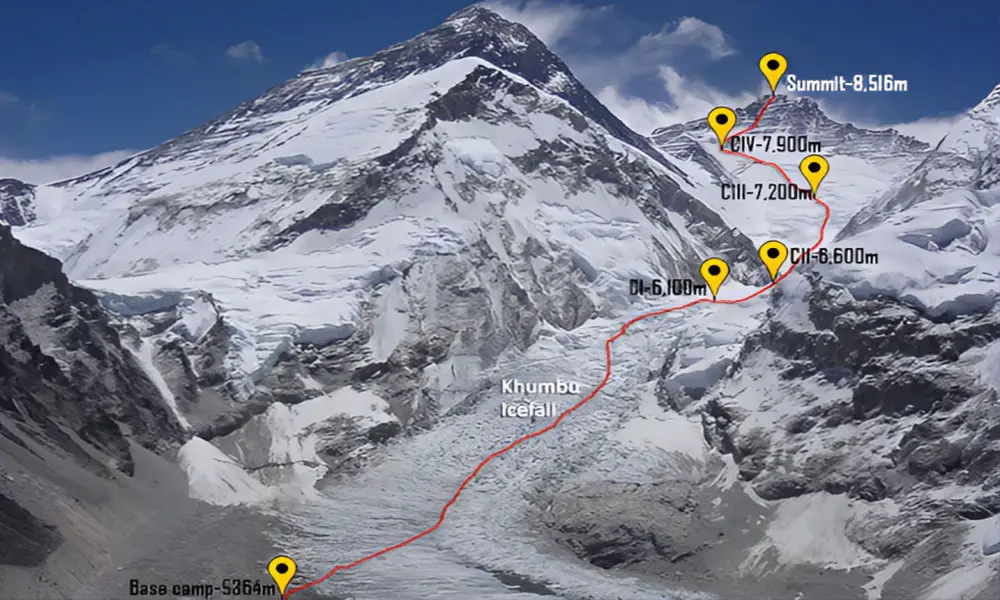
The route to Lhotse is almost the same as Mount Everest till you reach Camp III. From Camp III, you need to head south of Everest to summit Lhotse. On your way up, you will be crossing the Khumbu Icefall, the Western Cwn, and the Yellow Band. The upper Lhotse Face curves upward substantially by the last ascent path to Lhotse, which leads to a couloir with easy access to the summit.
While Everest expeditors need to head across the Geneva Spur, the Lhotse climbers need to ascent towards Lhotse’s face instead. The last ascent route takes mountaineers via the narrow “Reiss couloir” till they reach Lhotse’s main peak.
How many people have climbed Lhotse?
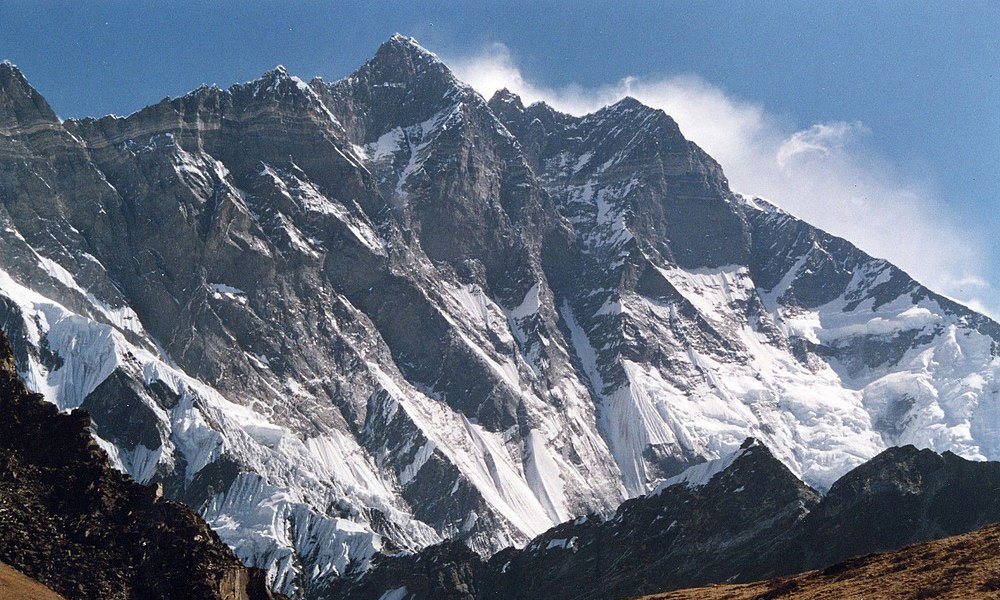
The first known attempt at Lhotse is recorded to be the 1955 International Himalayan Expedition. Norman Gunther Dyhrenfurth led this expedition. The team included other mountaineers like Austrians Erwin Schneider and Ernst Senn, Swiss Bruno Spirig and Arthur Spöhel, and Americans Fred Beckey, George Bell, and Richard McGowan.
At the time, the Nepali Liason officer was Gaya Nanda Vaidya. Above 200 porters as well as a number of Sherpas, went along with the expediting team. The Lhotse Shar was quite dangerous to them, and they later decided to shift their route to the Western Cwm and Lhotse’s northwestern face. This was, again, not possible, and they had to return due to strong wind and unfavorable weather conditions. On their way to the top, they also filmed a short film at the peak. The team had, however, been successful in making ascents to smaller peaks in Khumbu.
Lhotse was first summited by two members of the Swiss Mount Everest/Lhotse Expedition, Ernst Reiss and Fritz Luchsinger, on 18 May 1956. Likewise, Austrian mountaineers Sepp Mayerl and Rolf Walter summited the Lhotse Shar on 12 May 1970. Czech mountaineer Soňa Vomáčková reached the main Lhotse summit on 12 May 1999 and became the first woman to summit the peak without any supplemental oxygen.
The middle peak of the Lhotse remained unclimbed for many years since the discovery of the peak. But on 23 May 2001, a Russian expedition team, including Eugeny Vinogradsky, Sergei Timofeev, Alexei Bolotov, and Petr Kuznetsov, became the first people to ascend the peak.
By the end of December 2008, about 371 mountaineers had ascended the peak, while 20 perished in the mountain. Lhotse remained unclimbed in the years 2014, 2015, and 2016. But was soon ascended in the year 2017.
What is the Lhotse Face?
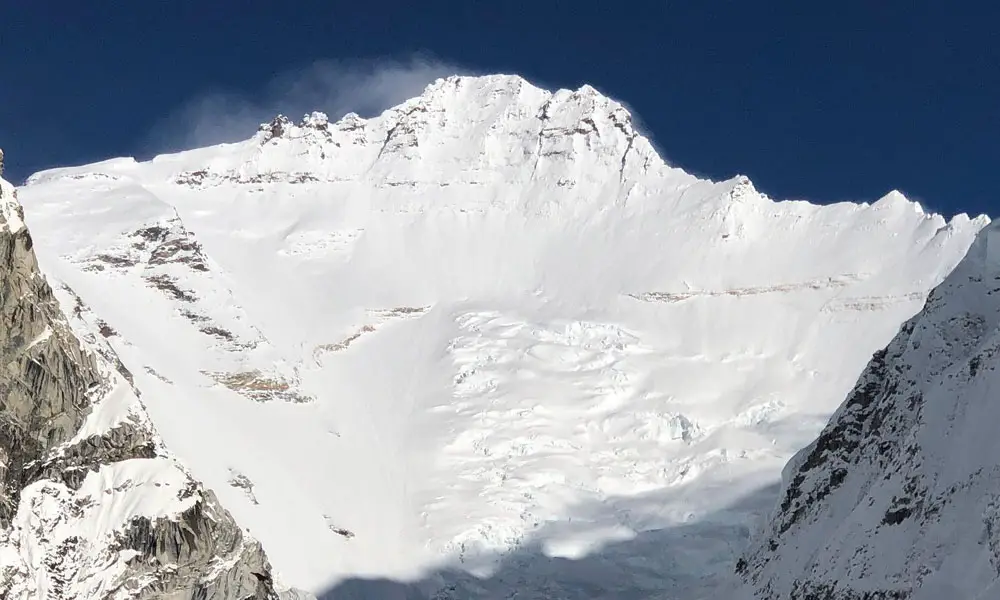
The Lhotse face is the western flank of the mountain. It is at a height of 1,125 m (3,690 ft). The Lhotse face is a wall of glacial ice. If you are looking to climb even Mount Everest, then you have to climb the Lhotse Face.
Sherpas will tie ropes to the icy glacial walls, through which the climbers have to maintain a good rhythm to climb properly. The climb through Lhotse’s face is quite dangerous, and any wrong step might lead to accidents. Likewise, the face is interrupted by the Geneva Spur and the Yellow Band.
One of the most recent tragic incidents in the Lhotse Face includes that of Ang Furba Sherpa, who died in 2016 after a fall from Lhotse Face.
Is Lhotse Harder to climb than Everest?
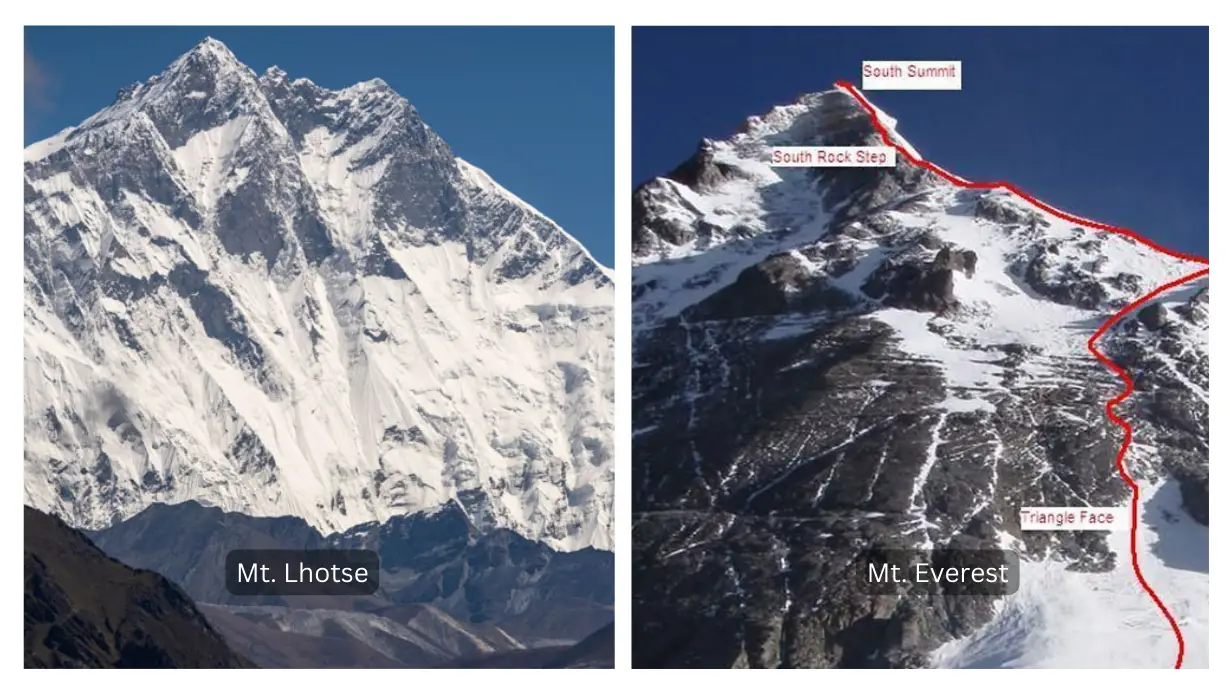
Lhotse is not easy to summit in comparison to Mount Everest. However, since Everest is taller than Lhotse, standing at a height of 8848 meters above sea level, people tend to assume that it is, in fact, easier to summit the former. Lhotse has its challenges, including the rocky and ice-steep walls. And any mishaps in a mountaineer may lead to a dreadful death.
The Lhotse Shar and the Lhotse face are some components of the mountain that are the hardest to climb. Moreover, since the peak is 8,516 m tall, you cannot expect the journey to be easy. The journey to Lhotse, if not careful, can be fatal for anyone, even the most experienced mountaineers.
Hence, it is not quite right to underestimate the ruthless potential of Mount Lhotse despite it being shorter than Everest.
Is Lhotse part of Mount Everest?
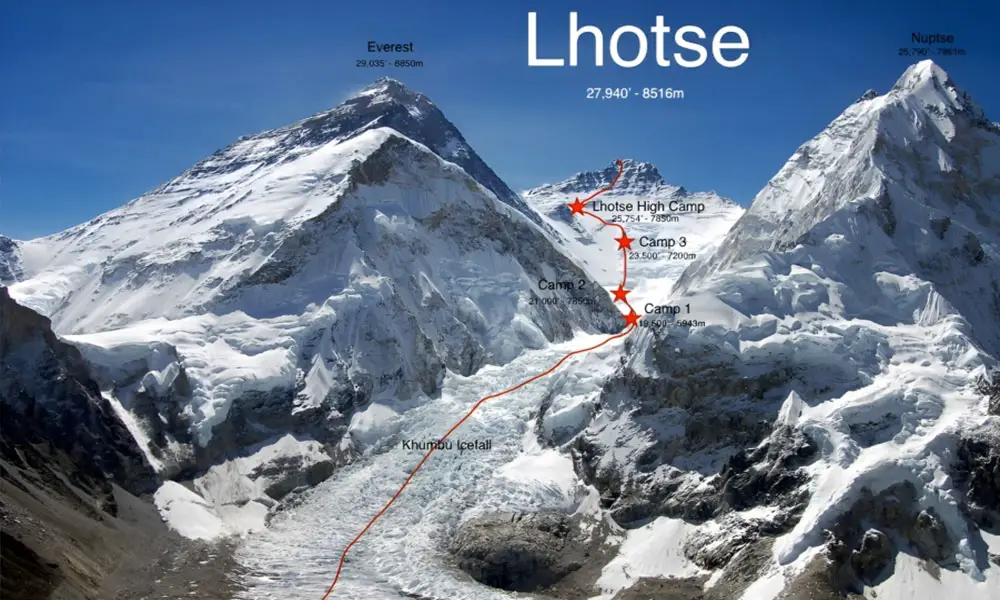
While Lhotse and Mount Everest are situated quite close to one another, Lhotse is an individual mountain and not a part of Mount Everest. Whatsoever, it would not be entirely right to say that Lhotse is not a part of Everest, as it is a piece of the Everest massif. The mountain was even called E1, referring to Everest 1. The name was given by the Survey of India in 1931.
Therefore, Lhotse is only a part of the Everest massif but not entirely a component of Mount Everest as it has its own identity as the fourth highest mountain in the world.
Why is Lhotse a separate mountain?
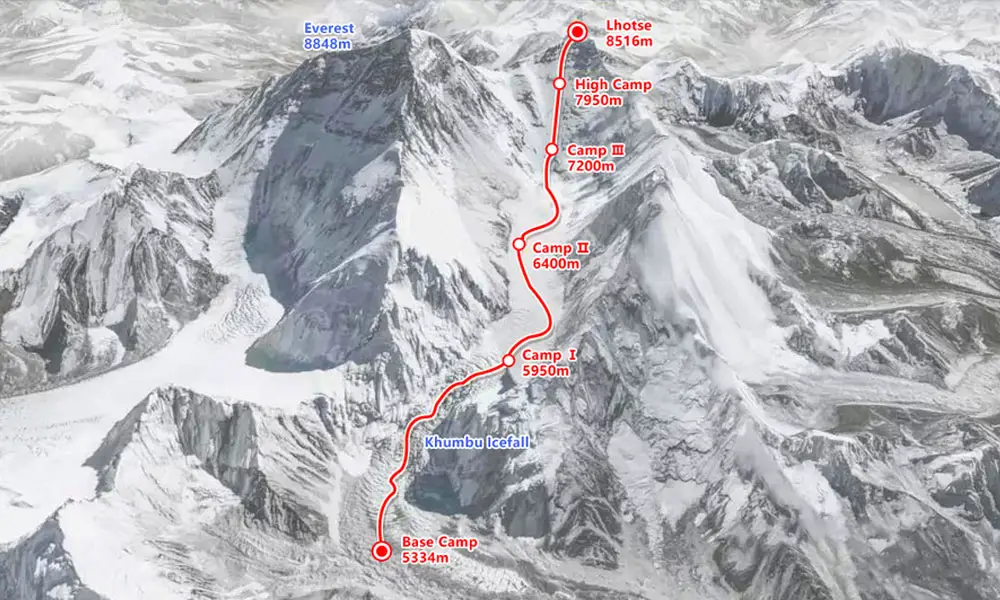
Lhotse has very often been overpowered by the popularity of Mount Everest, while many even consider it a part of Everest. Lhotse, however, has an individual identity that lies above the lowest point of South Col, which is on the southern side of Everest.
You have to continue above Camp III through the south if you want to summit Lhotse, which is a little beyond Camp IV, an entirely different route from Everest. Had it been that Lhotse’s height was around 500m, it could have been considered a part of Everest, but it in itself is 8,516 meters (27,940 ft) tall.
How to reach Lhotse from the Nepalese side?
You can reach Lhotse from the Nepalese side of the mountain. You need to book a flight to Kathmandu at first. From there, fly to Lukla. You will take about a ten days walk to the base camp from Lukla while also crossing the Namche Bazaar.
From the base camp, you can proceed with your ascent of Lhotse.
What is the best time to climb Lhotse?
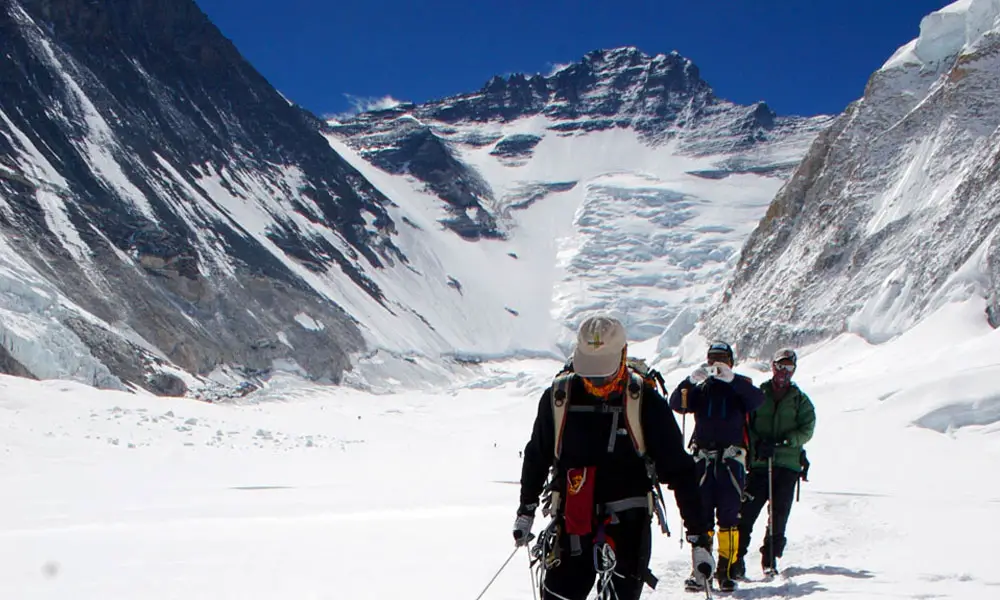
The best time to climb Lhotse is a little before and after the monsoon. Monsoons are not quite favorable to mountaineers as the trails get wet and difficult. Accidents are very likely, especially during winter and monsoons. Hence, it would be wise for mountaineers to schedule their expedition during the months of April to May and September to October. In conclusion, the best seasons to summit the mountain would be both spring and autumn. The rest of the seasons are not as right when considering the best time for the ascent.
How much does it cost to climb Lhotse?
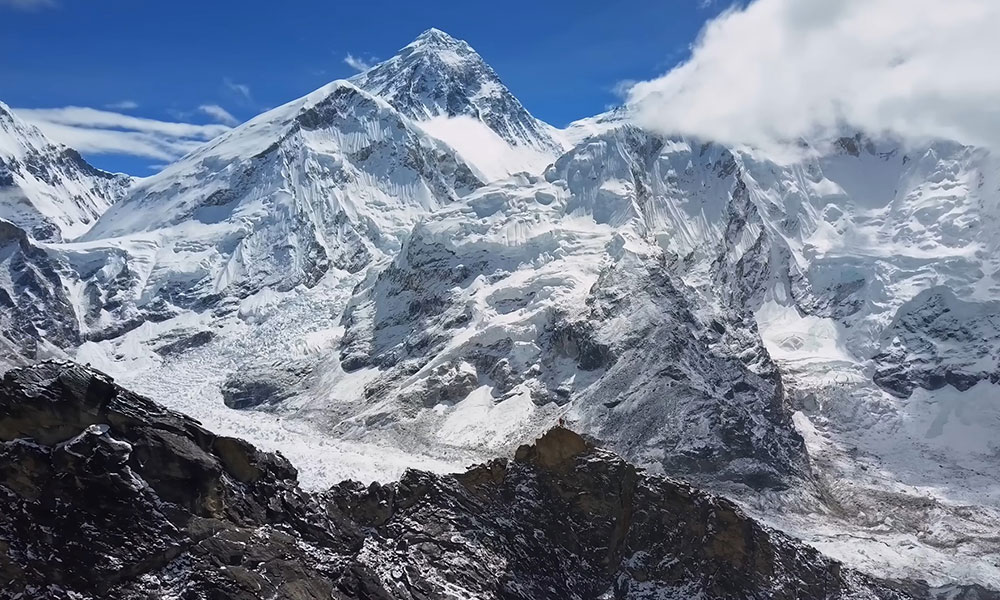
One of the main concerns for mountaineers while attempting to climb Lhotse is the costs related. If you want to climb Lhotse, it is wise to carry along around $16000 per head. Climbers are required to pay for a lot of things when they are attempting to make climb to a mountain like Lhotse.
You will need to pay for food, accommodation, gear, lodging, transportation, guides, porters, oxygen cylinders, medical team, insurance, etc. when you are in Lhotse. The more you carry, the better and safer it is. While $16000 USD is the least you should carry, you might need to consider taking along extra in case, especially if you are not taking the help of any travel agency while you are there. Likewise, mountaineering and travel agencies tend to provide their clients with all the necessary services.
How many days does it take to climb Lhotse?
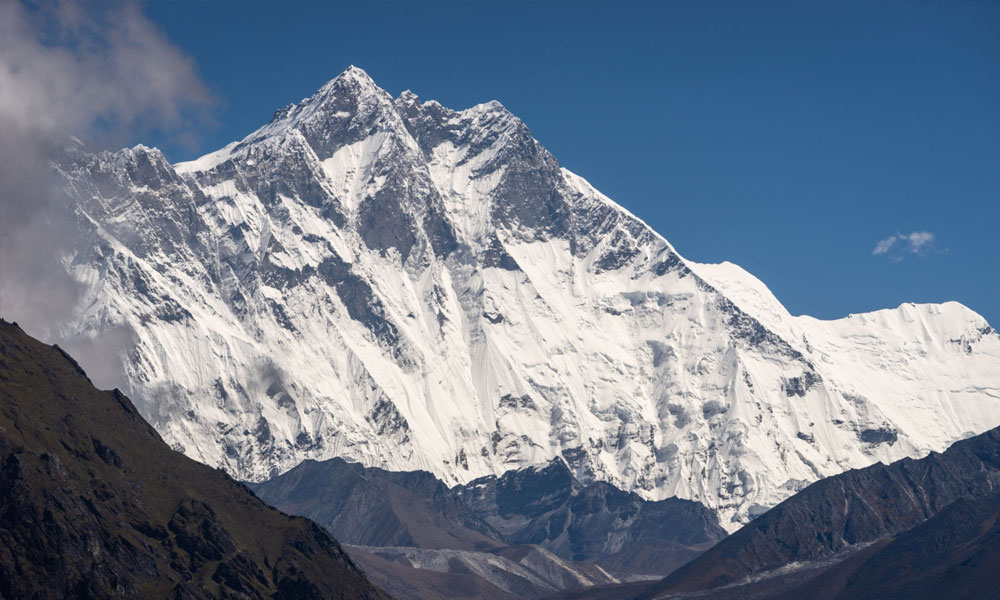
Your accent to Lhotse is likely to take you a total of 50 days via Kathmandu-Kathmandu. This time frame will be used for the entire expedition, covering administrative procedures, travel to and from Base Camp, Base Camp acclimatization, and above Base Camp for the summit attempt. The climb through the mountain is about 9 hours and above for a climber on average on a single day. But, the time or hours taken every day cannot be generalized as the climb and the speed completely depends on both the speed and the expertise of the climber.
And your journey to the base camp will start from Lukla and end at Lukla. Going back and forth from Lukla will require you to end up and start both from Kathmandu.
What is the success rate of Lhotse?
The success rate of Lhotse is 67%. There have been several attempts to climb Lhotse since the first attempt in 1955. More than 300 people have been successful in ascending the mountain throughout the years. And, though not easy, the success rate of climbing and actually summiting Mount Lhotse is way higher than Mount Everest which is in the north of Lhotse.
Many people, specifically 25% of the climbers, over the decades, have been successful in summiting Lhotse without supplemental oxygen. Though not suggested, an experienced mountaineer can possibly do the same and successfully summit and return back and forth from Lhotse, as did many other accomplished mountaineers.
How to train to summit Lhotse?
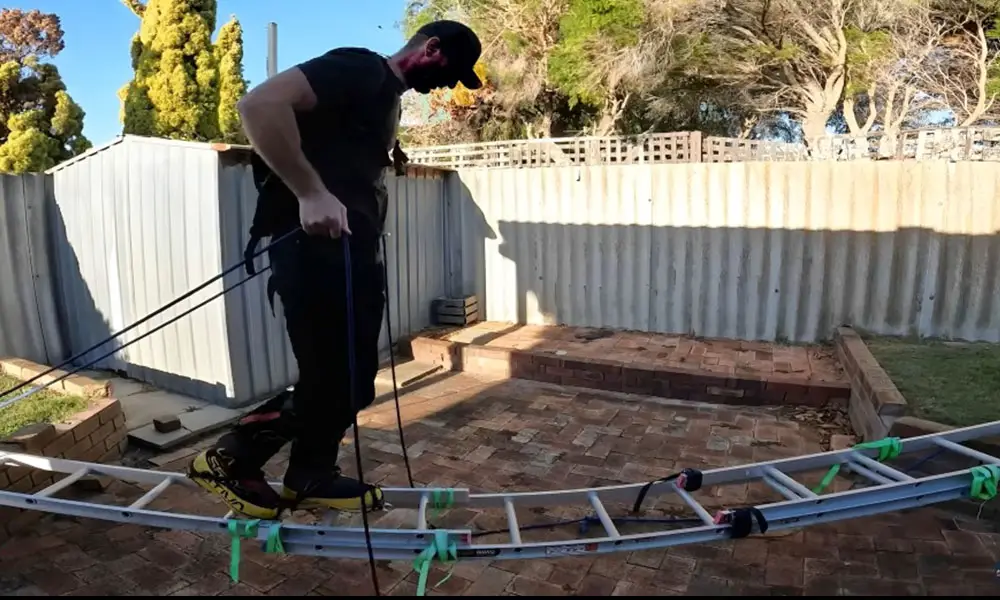
Lhotse is a mountain above a height of 8000m. This means that you are going to require great stamina and physical ability to climb Lhotse. Hence, if you can find a mountain to train yourself on your way to the peak, then do it without a second thought! 2 to 3 months of training is likely to come to use when you’re at it. When you climb smaller mountains, you teach your body to become habituated to the conditions of the mountains while also knowing the right ways to climb a mountain. Moreover, if you live in a country above sea level, then you should practice taking walks and even running to the beach with a heavy load.
Either way, the goal is to train your body for the cardio and strength required to climb a mountain as high as Lhotse.
Also read:
